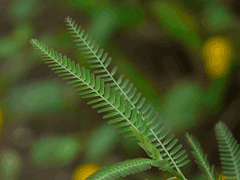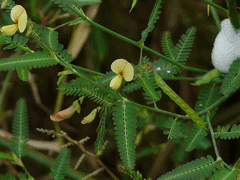 |
|
http://flickr.com/photos/91314344%40N00 |
 |
| http://flickr.com/photos/91314344%40N00 |
Translate this page:
Summary
Physical Characteristics

 Hedysarum alpinum is a PERENNIAL growing to 0.6 m (2ft).
Hedysarum alpinum is a PERENNIAL growing to 0.6 m (2ft).
See above for USDA hardiness. It is hardy to UK zone 4. It is in flower in June, and the seeds ripen in August. The species is hermaphrodite (has both male and female organs) and is pollinated by Insects.
It can fix Nitrogen.
Suitable for: light (sandy), medium (loamy) and heavy (clay) soils and prefers well-drained soil. Suitable pH: mildly acid, neutral and basic (mildly alkaline) soils. It cannot grow in the shade. It prefers moist soil.
UK Hardiness Map
US Hardiness Map
Synonyms
H. americanum. H. boreale. Hort. non Nutt.
Plant Habitats
Cultivated Beds;
Edible Uses
Edible Parts: Root
Edible Uses:
Root - raw or cooked[61, 177]. A carrot-like flavour[105]. The root can be harvested from autumn until spring, it tastes best after some frosts[172]. Possibly toxic.
** Please read The New Yorker link in the Reader Comments below
References More on Edible Uses
Medicinal Uses
Plants For A Future can not take any responsibility for any adverse effects from the use of plants. Always seek advice from a professional before using a plant medicinally.
None known
References More on Medicinal Uses
The Bookshop: Edible Plant Books
Our Latest books on Perennial Plants For Food Forests and Permaculture Gardens in paperback or digital formats.

Edible Tropical Plants
Food Forest Plants for Hotter Conditions: 250+ Plants For Tropical Food Forests & Permaculture Gardens.
More

Edible Temperate Plants
Plants for Your Food Forest: 500 Plants for Temperate Food Forests & Permaculture Gardens.
More

More Books
PFAF have eight books available in paperback and digital formats. Browse the shop for more information.
Shop Now
Other Uses
References More on Other Uses
Cultivation details
Easily grown in ordinary garden soil in a sunny position, preferring a deep well-drained sandy loam[1, 200]. Plants strongly resent root disturbance and should be placed in their permanent positions as soon as possible[1]. The var. H. alpinum americanum. Michx. is used for food[61, 177]. This species has a symbiotic relationship with certain soil bacteria, these bacteria form nodules on the roots and fix atmospheric nitrogen. Some of this nitrogen is utilized by the growing plant but some can also be used by other plants growing nearby[200].
References Carbon Farming Information and Carbon Sequestration Information
Temperature Converter
Type a value in the Celsius field to convert the value to Fahrenheit:
Fahrenheit:
The PFAF Bookshop
Plants For A Future have a number of books available in paperback and digital form. Book titles include Edible Plants, Edible Perennials, Edible Trees,Edible Shrubs, Woodland Gardening, and Temperate Food Forest Plants. Our new book is Food Forest Plants For Hotter Conditions (Tropical and Sub-Tropical).
Shop Now
Plant Propagation
Seed - sow in a cold frame as soon as it is ripe or in the spring[200]. Stored seed should be pre-soaked for 24 hours in warm water. Prick out the seedlings into individual pots as soon as they are large enough to handle and plant them out into their permanent positions in the summer. Division in spring. Great care is needed since the plant dislikes root disturbance[200].
Other Names
If available other names are mentioned here
Native Range
TEMPERATE ASIA: Russian Federation-Western Siberia (Western Siberia), Russian Federation-Eastern Siberia (Eastern Siberia), Mongolia, Russian Federation (Primorye, Amur), China (Manchuria), Korea TROPICAL ASIA: India (Jammu and Kashmir), Pakistan (Kashmir) NORTHERN AMERICA: Canada (Northwest Territories, Yukon, Québec, Ontario, New Brunswick, Newfoundland and Labrador, Saskatchewan (south), Alberta (southwest), Manitoba, British Columbia), United States (Alaska, Maine, Michigan (north), New Hampshire (north), Vermont (north), North Dakota, South Dakota (west), Montana, Wyoming (east)) EUROPE: Russian Federation-European part (European part (north))
Weed Potential
Right plant wrong place. We are currently updating this section.
Please note that a plant may be invasive in one area but may not in your area so it's worth checking.
Conservation Status
IUCN Red List of Threatened Plants Status :

Growth: S = slow M = medium F = fast. Soil: L = light (sandy) M = medium H = heavy (clay). pH: A = acid N = neutral B = basic (alkaline). Shade: F = full shade S = semi-shade N = no shade. Moisture: D = dry M = Moist We = wet Wa = water.
Now available:
Food Forest Plants for Mediterranean Conditions
350+ Perennial Plants For Mediterranean and Drier Food Forests and Permaculture Gardens.
[Paperback and eBook]
This is the third in Plants For A Future's series of plant guides for food forests tailored to
specific climate zones. Following volumes on temperate and tropical ecosystems, this book focuses
on species suited to Mediterranean conditions—regions with hot, dry summers and cool, wet winters,
often facing the added challenge of climate change.
Read More
Expert comment
Author
L.
Botanical References
43200266
Links / References
For a list of references used on this page please go here
Readers comment